“Out on the desert early in the morning, see the happy Road Runner burning up the roads!”
 Many of the animated short cartoons of the 1940s during the war years and post-war period had two essentials that were key to their success: acceleration and violent action. Naturally, chase cartoons became the dominant format and provided a vehicle for both principles. Over at Warner Bros., director Chuck Jones and his main writer Mike Maltese jokingly discussed different variations of predator on the hunt for prey. The two wanted to deviate from chases that involved a cat and a mouse, or a hunter and wild game, the latter of which was often the case with the studio’s own Bugs Bunny and Daffy Duck. As a result of these conversations, Jones directed a cartoon that culminates in a long chase that almost acts as a parody of the template. In Fair and Worm-er (released September 1946; story credited to Maltese and Tedd Pierce), a worm, a crow, a cat, a dog and a dogcatcher pursue each other.
Many of the animated short cartoons of the 1940s during the war years and post-war period had two essentials that were key to their success: acceleration and violent action. Naturally, chase cartoons became the dominant format and provided a vehicle for both principles. Over at Warner Bros., director Chuck Jones and his main writer Mike Maltese jokingly discussed different variations of predator on the hunt for prey. The two wanted to deviate from chases that involved a cat and a mouse, or a hunter and wild game, the latter of which was often the case with the studio’s own Bugs Bunny and Daffy Duck. As a result of these conversations, Jones directed a cartoon that culminates in a long chase that almost acts as a parody of the template. In Fair and Worm-er (released September 1946; story credited to Maltese and Tedd Pierce), a worm, a crow, a cat, a dog and a dogcatcher pursue each other.
Later, Jones and Maltese expanded their idea with a hunt more ambiguous than the usual fare—a half-starved coyote and a roadrunner that possesses hyper-accelerated speed. (In reality, roadrunners only reach up to a speed of 20 mph, whereas an adult coyote can reach up to 35-43 mph in pursuit.) In accordance with surviving story conference notes from many of Jones’s cartoons, the “jam session” for this first story might have occurred either June or July 1947. The session for production #1089, Frigid Hare (1949), occurred May 28, 1947; meanwhile, Fast and Furry-ous (1949), the debut of the Road Runner and the Coyote, was two cartoons ahead in production order. Early model sheets of the characters dating from this period reveal the Coyote’s original name as “Don Coyote,” a parody on the literary character Don Quixote.
 Throughout the series, the Coyote’s incompetence leads to his own defeat as various traps and contraptions fail to stop the Road Runner in every instance. This set the series apart from other chase cartoons, where the intent is to root for the persecuted creature. As Jones stated in an interview with historian Mike Barrier, “The sympathy always had to be with the Coyote. The Coyote was never hurt or in pain, he was insulted, as most of us are when we suffer misfortune.” In his first (of five) appearances with Bugs Bunny, Operation: Rabbit (1952), Wile E. Coyote, as he is first named, has spoken dialogue—unlike in the Road Runner series—boastfully touting himself as a genius. In these films, Wile E.’s own hubris adds to his destruction— near the end of the film, he labels himself a “super genius,” a title he relishes with sheer delight before he is struck by a moving train.
Throughout the series, the Coyote’s incompetence leads to his own defeat as various traps and contraptions fail to stop the Road Runner in every instance. This set the series apart from other chase cartoons, where the intent is to root for the persecuted creature. As Jones stated in an interview with historian Mike Barrier, “The sympathy always had to be with the Coyote. The Coyote was never hurt or in pain, he was insulted, as most of us are when we suffer misfortune.” In his first (of five) appearances with Bugs Bunny, Operation: Rabbit (1952), Wile E. Coyote, as he is first named, has spoken dialogue—unlike in the Road Runner series—boastfully touting himself as a genius. In these films, Wile E.’s own hubris adds to his destruction— near the end of the film, he labels himself a “super genius,” a title he relishes with sheer delight before he is struck by a moving train.
During the 1950s and early 1960s, Jones directed nineteen subsequent cartoons with the Coyote and Road Runner. Because of their familiarity with the characters, Jones and his creative team were able to complete each title in a shorter amount of time than his other productions. During the latter period, the Warners animation department went into television production with the half-hour Bugs Bunny Show, as well as commercials for General Foods, aside from the entertainment theatricals. Its first season aired on the ABC network from October 1960 to April 1961.
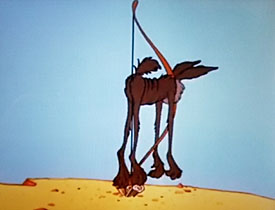 While The Bugs Bunny Show was still in production in 1961, Jones developed an animated pilot for the ABC network called The Road Runner Show. As indicated in the production draft, the film is labeled by sequence from A-L (though “J” was omitted during production). Since the production numbers for Warners cartoons have been neatly catalogued, it is easy to determine the amount of animation repurposed for the pilot. For instance, the scenes with the Coyote loading himself into a bow, and a later sequence where he inserts a grenade onto a model airplane are excerpts from Zip n’ Snort, released January 1961.
While The Bugs Bunny Show was still in production in 1961, Jones developed an animated pilot for the ABC network called The Road Runner Show. As indicated in the production draft, the film is labeled by sequence from A-L (though “J” was omitted during production). Since the production numbers for Warners cartoons have been neatly catalogued, it is easy to determine the amount of animation repurposed for the pilot. For instance, the scenes with the Coyote loading himself into a bow, and a later sequence where he inserts a grenade onto a model airplane are excerpts from Zip n’ Snort, released January 1961.
The production draft reveals an interesting note involving other sequences used in the pilot. Scenes mentioning production #1608 includes scenes with the Coyote and a lasso, and an extended series of backfires involving a boulder-throwing catapult. These sequences were intended for To Beep or Not to Beep, which did not reach theaters until December 1963. These scenes could have been proposed just for the pilot, but as the documentation indicates, aside from the 1963 cartoon designated a production number, the animation had already been completed by October 1961.
In the new animation intended for the pilot, Jones gave his supervising animators Ken Harris, Ben Washam, and Dick Thompson their own sequences. However, in sequence “A,” Bob Bransford is given credit in the production draft for the opening scenes, while also using some lifted footage from Hip Hip-Hurry! (1958). The only difference is the fade-in of the desert sunrise, as the camera pans over to singing birds and blossoming desert flowers before the Road Runner speeds into frame. Harris animates sequence “B” with the Coyote waiting behind a speed limit sign not realizing the Road Runner is right beside him.
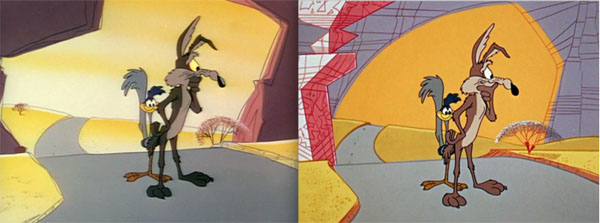
“Hip Hip Hurry” (left); “Adventures of The Road Runner” (right)
Dick Thompson is largely credited for the animation in sequence “D”— Wile E. Coyote watching and analyzing his failures through a film projector, directly addressing the audience with his intentions to correct these errors. Later in the sequence, the scene of the transcontinental truck passing through, catching the Coyote’s lasso, and dragging his body across the desert road, is lifted from an earlier Coyote/Road Runner, Stop, Look and Hasten! (1954).
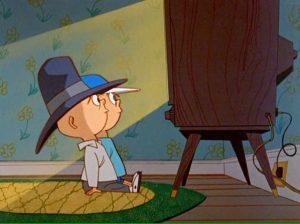 Sequence “E” reveals the antics of the Coyote and the Road Runner watched on television by Ralph Phillips and another child named Arnold, as he is listed in the production papers. Ben Washam handles all the new animation with Ralph and Arnold, voiced by Dick Beals and Nancy Wible; the two recorded their dialogue track in early November 1961. This sequence has a commercial break promoting the famous “Bat-Man” costume from Gee Whiz-z-z-z (1956), narrated by ABC’s then house announcer Dick Tufield. Ralph Phillips had appeared as a child in two cartoons directed by Jones. The first of which, From A to Z-z-z-z (1954), plays in its entirety. When Arnold acts as a psychiatrist to his daydreaming patient, the cartoon follows.
Sequence “E” reveals the antics of the Coyote and the Road Runner watched on television by Ralph Phillips and another child named Arnold, as he is listed in the production papers. Ben Washam handles all the new animation with Ralph and Arnold, voiced by Dick Beals and Nancy Wible; the two recorded their dialogue track in early November 1961. This sequence has a commercial break promoting the famous “Bat-Man” costume from Gee Whiz-z-z-z (1956), narrated by ABC’s then house announcer Dick Tufield. Ralph Phillips had appeared as a child in two cartoons directed by Jones. The first of which, From A to Z-z-z-z (1954), plays in its entirety. When Arnold acts as a psychiatrist to his daydreaming patient, the cartoon follows.
In the next sequence, the psychoanalysis does not take effect on Ralph. He does a Road Runner-like exit back to the television set; Arnold also surrenders to the small screen. Ralph then asks the important question which other children must have wondered while watching the series: why exactly does the Coyote want to eat the Road Runner? Instead of the more logical answer—that the Road Runner is the Coyote’s only means of nourishment in a barren landscape—the Coyote produces a chart that reveals different types of flavor profiles, from sweets, candies, vegetables, cheeses, cold cuts and even a dry martini! The finale of the sequence of the Coyote looking inside the cookbook was partially reused for the opening scenes of To Beep or Not to Beep, sans dialogue.

In Sequence “H,” the Coyote demonstrates his last method to capture his meal by using a Greco-Roman catapult. The scenes that occur before (iron wrecking ball and boulders) and after (various catastrophes with the catapult) constitute a large amount of the footage later used in To Beep or Not to Beep. In the production draft, the animator assignment for the new animation in Sequence “H”— likewise for the small scene of the Coyote’s anger towards the blueprint in Sequence “I”—are not filled, but the scenes are undoubtedly Ken Harris’s work. The animator responsible for the final scenes of the Coyote asleep in his cave and awakened by the Road Runner dashing into the projector screen at the end of the film is unknown as of this writing.
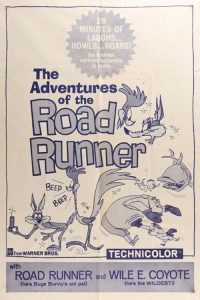 The ABC network ultimately rejected the pilot for The Road Runner Show, but the studio chose to release it as a theatrical featurette instead. Entitled The Adventures of the Road Runner, Jones was asked to re-edit the pilot into a somewhat coherent 25 minute theatrical film.
The ABC network ultimately rejected the pilot for The Road Runner Show, but the studio chose to release it as a theatrical featurette instead. Entitled The Adventures of the Road Runner, Jones was asked to re-edit the pilot into a somewhat coherent 25 minute theatrical film.
Naturally, the original debut episode would have mentioned sponsored commercials within the program, including the scene with the “Bat-Man” costume. The draft page for Sequence “B” reveals two more scenes omitted from the featurette, possibly since it would have followed with genuine commercial airtime, and not footage from an earlier cartoon.
The film was released June 2nd, 1962, featured on a double bill with the live-action feature Lad: A Dog. Though he is credited for story under the main titles, Mike Maltese was working as a writer at Hanna-Barbera. John Dunn, a former Disney concept artist/writer hired at the studio in early 1960 to write bridging material for The Bugs Bunny Show, is also credited for story along with its director Chuck Jones. With the new material intended for the cancelled pilot, it is possible that Dunn wrote the dialogue, with input from Jones.
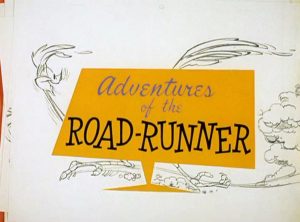 Tom Ray is not listed in the production draft, perhaps due to his involvement as a co-director on the film. However, his credit as a regular animator under the main titles with Bob Bransford, along with the supervising animators, might account for the footage that ultimately became To Beep or Not to Beep.
Tom Ray is not listed in the production draft, perhaps due to his involvement as a co-director on the film. However, his credit as a regular animator under the main titles with Bob Bransford, along with the supervising animators, might account for the footage that ultimately became To Beep or Not to Beep.
Milt Franklyn, credited for the opening song, “Out on the Desert,” passed away a few weeks before its release on April 26. In turn, To Beep or Not to Beep was re-scored by studio house composer Bill Lava, with new sound effects added. Matt Hunter has made a comparison to the two scores in this video.
The production number for The Road Runner Show pilot is designated as #1663. This later shifted to a different theatrical short, Hare-Breadth Hurry, the last pairing of Bugs Bunny and Wile E. Coyote, released June 1963, with Bugs Bunny assuming the part of the Road-Runner! The featurette was later cut into two shorts, released non-theatrically, Road Runner A Go-Go and Zip Zip Hooray, in 1965.
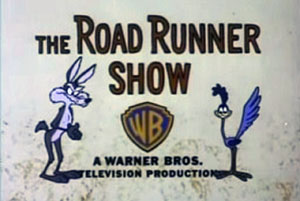 Eventually, The Road Runner Show emerged as a syndicated Saturday morning package of cartoons for CBS (and later, on ABC) that ran in the late 1960s and early 1970s. CBS also paired The Road Runner Show with The Bugs Bunny Show, known as The Bugs Bunny/Road Runner Hour, which lasted into the mid-1980s.
Eventually, The Road Runner Show emerged as a syndicated Saturday morning package of cartoons for CBS (and later, on ABC) that ran in the late 1960s and early 1970s. CBS also paired The Road Runner Show with The Bugs Bunny Show, known as The Bugs Bunny/Road Runner Hour, which lasted into the mid-1980s.
The survival rate of production drafts related to Chuck Jones are miniscule. Documentation mostly originates from his films produced in the 1960s, with little to no materials from his tenure at Warner Bros. Still, it is quite a rare thing for a draft from a Jones cartoon to surface. As for the breakdown video, the notations on the upper left corner are only given to the new sections intended for the original Road Runner Show pilot.
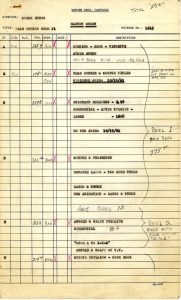
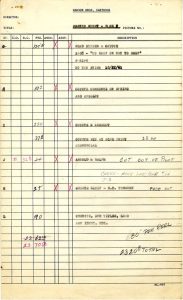
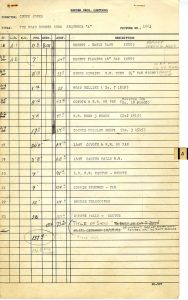
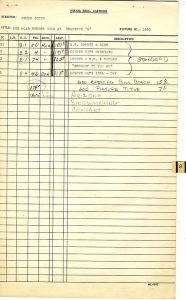
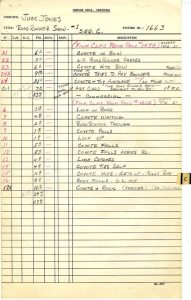
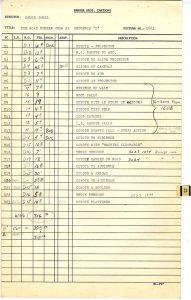
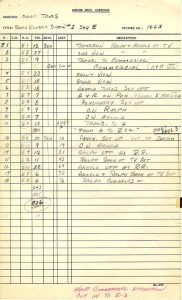
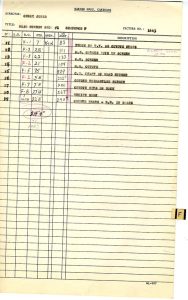
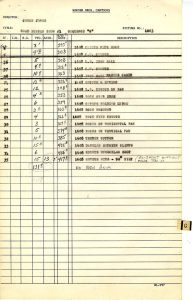
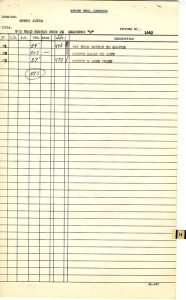
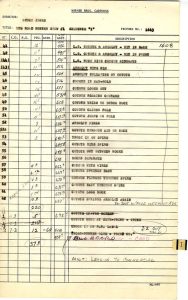
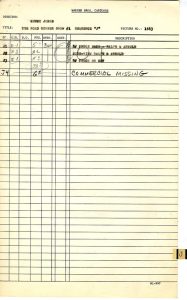
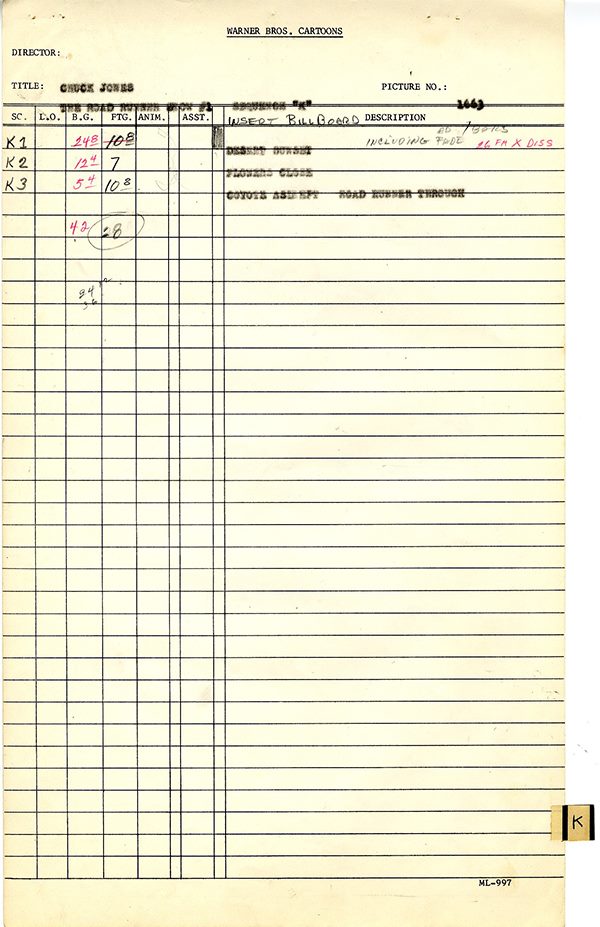

Watch the Breakdown video: CLICK HERE!
Special thanks to author/historian Kurtis Findlay for lending the production materials from this film. Thanks to Michael Barrier and Keith Scott for additional information.


 DEVON BAXTER is a film restoration artist, video editor, and animation researcher/writer currently residing in Pennsylvania. He also hosts a
DEVON BAXTER is a film restoration artist, video editor, and animation researcher/writer currently residing in Pennsylvania. He also hosts a 





















































































I cannot tell you how much this “special“ cartoon has grown on me over the years. Since I discovered it on its inclusion in Looney Tunes Golden collection, volume two, disc two, I’ve really begun to like it! I especially like the well detailed opening sequence here, with it song introducing the characters. I also like the way Ralph Phillips comes into the picture, along with a twin brother (?) And the dialogue they’re in. Thanks, as always, for the remainder of the information bringing to light just how this little special cartoon was created. I wasn’t quite sure whether it premiered in theaters or was on television as a starter. Anyway, it’s a great little film. If ever my dream set is created, that is a DVD or Blu-ray set of the complete run of road runner cartoons, including this wonderful special fully restored, I will be very happy. In the meantime, this is wonderful.
Ralph and Arnold remind me of a very young Beavis and Butt-Head.
The lyrics to Milt Franklyn’s opening song “Out on the Desert” are clearly derived from an old children’s song, “Down by the station early in the morning, see the little pufferbellies standing in a row.” Franklyn furnished it with a new melody; the original tune is virtually the same as that of “Alouette”. The Four Preps recorded a pop version of the pufferbellies song, but I’ll always remember when Herman taught it to a group of Russians in an episode of “The Munsters”.
Any idea who drew the sketches used in the opening credits?
I’m 100% certain those are Chuck Jones sketches in the credits.
The version I knew as a kid was:
“Down by the station
Early in the morning
See all the puff-a-trains (puffer trains?)
Standing in a row.
See the little(?) driver
Turn the little handle
Iffty-piffty-choo-choo
And off they go!”
It was so comforting that Ralph Phillipps “found work!”
That’s awesome, Devon.
I’m a little surprised that ADVENTURES OF THE ROAD RUNNER survives intact. Given the way Warner chopped up the BUGS BUNNY SHOW negatives without a thought to the future, I would have expected them to have done the same with ADVENTURES when they culled footage from it for ROAD RUNNER A GO GO and ZIP ZIP HOORAY.
Presumably “Adventures of the Road Runner” would lean heavily on existing theatrical shorts, linking them in the manner of the original “Bugs Bunny Show”. But did Jones have specific plans?
Would Ralphie and Arnold be there every week, offering commentary and segueing into other non-Roadrunner toons? Would the Coyote continue to break the fourth wall to talk to them? Would the Roadrunner cartoons be used largely intact, or would Jones continue to shuffle bits and pieces?
Maybe this was always intended purely as an introduction to the characters, giving way to a more standard shorts-and-bumpers format. But one likes to think Jones had something more interesting in mind.
The book “The Dream That Never Was” about Jones’s comic strip “Crawford” goes into his plans for the series, and yeah apparently Ralph and Arnold were going to be recurring characters, along with a whole gang of other kids.
I sort of wonder if “Hare-Breadth Hurry” was originally planned to be an episode of the proposed series which might explain it’s somewhat odd presentation.
The video doesn’t seem to work, even when I use the “Click Here” link. It keeps saying, “The number of allowed playbacks has been exceed.”
Great job, Devon! This film used to be *VERY* hard to see, as it never aired on TV in its original form. The best anyone could find for a long time was a VHS copy of a very damaged print (which I believe originated from the personal collection of Mr. Jerry Beck himself) with bits and pieces from “Beep Prepared”, “Roadrunner Agogo” and “Zip Zip Hooray” dubbed in. I remember it ending with the ending from “To Beep or Not to Beep”, and there were some bits with the kids watching TV missing entirely. Eventually someone at Warner Bros. located an intact copy, and that’s what ended up on the Golden Collection DVD.
Considering that Road Runner is a one-joke premise (not as objectionable as individual short cartoons spread out over 15 years, but not easy to binge-watch), I’m surprised they even got a featurette out of it.
This one’s for Jerry – what’s the story of how was this rare cartoon was found
There’s a whole long story behind this – but in a nutshell: THE ADVENTURES OF THE ROAD RUNNER featurette was essentially not seen for decades because the studio had no use (in television syndication) for a stand-alone 25 minute cartoon. So, no one was really looking for it. As Devon mentions above, the studio essentially chopped it in two to use as two more shorts in the syndicated package (or to use on the Saturday morning Bugs Bunny program).
However it was misplaced in the vaults for this reason: it was distributed “tied” to LAD: A DOG.
Decades later folks like me went looking for the Road Runner featurette and couldn’t find it…. Until one day my pal Jere Guldin, at the UCLA Archive, made the discovery while examining the original Technicolor negatives for LAD: A DOG. Jere found THE ADVENTURES OF THE ROADRUNNER was in the vaults labeled as reel 1 of LAD: A DOG (in fact, it was only the first 20 minutes on reel 1; the remaining few minutes of AORR was at the beginning of LAD’S reel 2).
So once we understood where the film was “hiding”- we were able to retrieve it and restore it.
DBenson asked the questions I’ve always had regarding this pilot/ featurette, except for one: As Baxter states in the preface, there were only around twenty existing RR cartoons at the time of production. Even if only one cartoon starring the title character was to air each week. that would still hardly be enough to fill out a season. And what if the show was picked up for a second year, what would be done then? Would new shorts have to be cranked out quickly? Really have to wonder what the long-term plan was here.
I also have a kinda-sorta related question for anyone that can answer: What feature film was the Philbert pilot paired with?
PHILBERT was not paired with any feature film.
The whole notion of shorts paired with features did not truly begin until the late 1980s. THE ADVENTURES OF THE ROAD RUNNER was a rare exception to the rule. The other exceptions were several Disney cartoon specials and True-Life Adventures (two-reelers usually).
If PHILBERT played specifically with Warner Bros. feature, I suppose it might have been shown with Warner’s April 1963 release CRITICS CHOICE (With Bob Hope and Lucille Ball) – but I’ve yet to find evidence of that. Unlike the pressbook for LAD: A DOG which showcased its pairing with AORR – there is no such evident promotion with CRITIC’S CHOICE.
Devon: One of the chapters of my upcoming two book set has a short interview with Veto Stasiunaitis. Some of you film collectors may know his name. After getting out of the Army in 1962, Veto worked as an “inbetweener” at Warner Bros. for about a year. He told me that the animation studio was on its last legs and that other than TV productions like CHEYENNE and SUGAR FOOT, etc. – the whole WB lot was like a ghost town. He also told me that he never knew what particular cartoon he was working on and that Chuck Jones was hardly ever around. He might show up for an hour or so to check things over and take off for another project. (I surmise it was the GAY PURREE feature for another studio.) Do you have any records that show his name connected to THE ADVENTURES OF THE ROAD RUNNER? He MAY actually have worked on this. He was not allowed to take any drawings home – and he tells me it was kind of a dismal place to work – not like it was in its heyday!
Fascinating. Veto doesn’t even appear on imdb. Wonder what shorts he worked on in his short time there? Chuck was fired from WB in July 1962, so he had to have been there before that to have witnessed Chuck’s slim presence.
Good post, Devon!
I mentioned to you that, when I talked to Ken Kimmelman (an animator from NY who worked at Terrytoons and other places), he mentioned that Chuck Jones almost hired him during the making of this film, only to have to decline because Ken had family commitments at the time. I replied that, considering Warners shut down their studio not too long after, he was better off in the long run.
Ian:
Well, that doesn’t surprise me. Veto told me that the “inbetweeners” worked in shifts. I can’r remember if Veto worked in the first or second shift during the day. He and four other guys shared a hotel room – which Warners paid for. The pay was very small, but for a bunch of single young guys – it was enough to live on. I don’t want to say too much more, because Veto didn’t have all that much to tell me, but yes, it is interesting how the WB animation studio was functioning at the time! i was hoping that he may have worked on THE ADVENTURES OF THE ROAD RUNNER and got some screen credit on it.
When the WB animation studio closed – for the first time – in 1963, Veto told me that it wasn’t a good time to find work in animation. Nobody was hiring – Hanna Barbera, etc. – in Hollywood, so he went back to Chicago and found work at Coronet Films and worked under Gordon Sheehan. Gordon, as I’ve noted here, had worked at Fleischer’s and Famous Studio before working at Sound Masters, Coronet Films, etc. He had later retired and taught animation at Columbia College in Chicago when I knew him.
Personally, I think it’s a mistake to dismiss Coyote/Roadrrunner shorts as a one -joke premise. The Chuck Jones shorts were known for their high quality animation, and it was fun, and interesting to see what kind of devices, or contraptions Wile E.Coyote would come up to try to catch the Roadrrunner. It’s not hard for me to bing watch them.
Were they trying to pretend they had more animators working on this than they really did? Tom Ray is credited as a co-director, and Ken Harris, Dick Thompson and Ben Washam as “supervising animators” – and all four of them are *also* credited as regular animators alongside the apparently unremarkable Bob Bransford.
This post is a must for superfans of Chuck. All this breakdown of who animated which scene and when and how many frames…….. It’s wonderful! Thanks!
Funnily enough, this pilot DID eventually see a TV airing. Teletoon aired this pilot on December 30, 2018…at 4:00am, where barely anyone was awake.
About the non-theatrical release of Road Runner A Go-Go and Zip Zip Hooray, they WERE intended for a theatrical release (with them having a MPAA number). However, for some reason, they ended up never being shown theatrically (though a 1985 Australian newspaper does show that one cinema DID play Road Runner a Go-Go). The Bugs Bunny/Road Runner Show DID play them in the late 70s (I actually have a recording from around that time with I believe both shorts), but I can’t find any evidence of the short before that.
Also, when I first watched this pilot, I originally thought To Beep or Not to Beep was actually comprised of reused animation from this (aside from the opening and closing). As this article shows, the production number and the drafts show that this actually PREDATED the pilot and the footage from To Beep or Not to Beep was actually reused for this and not vice versa (despite the fact To Beep was released AFTER, guess it was on the shelf for a while).